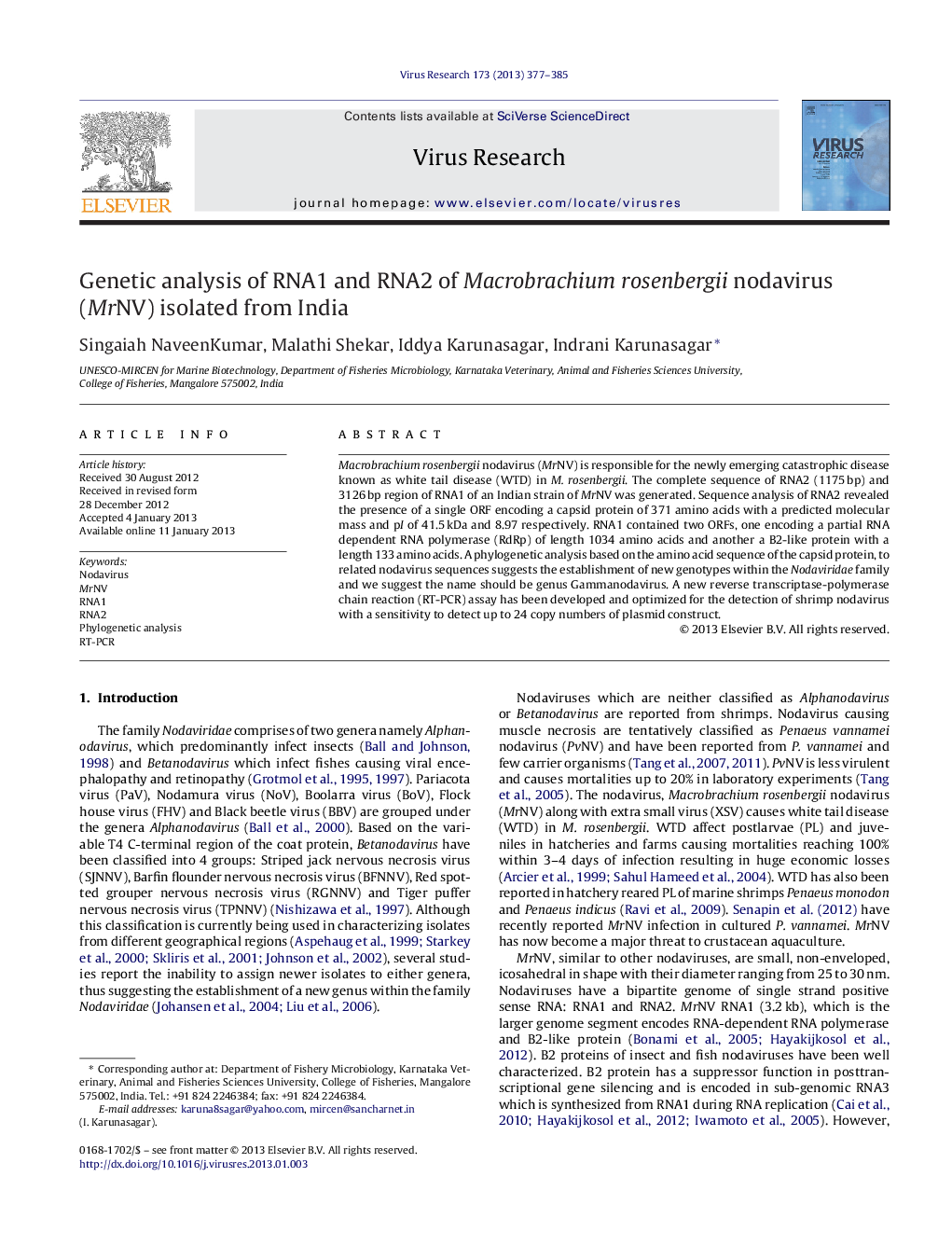| Article ID | Journal | Published Year | Pages | File Type |
|---|---|---|---|---|
| 3428698 | Virus Research | 2013 | 9 Pages |
Macrobrachium rosenbergii nodavirus (MrNV) is responsible for the newly emerging catastrophic disease known as white tail disease (WTD) in M. rosenbergii. The complete sequence of RNA2 (1175 bp) and 3126 bp region of RNA1 of an Indian strain of MrNV was generated. Sequence analysis of RNA2 revealed the presence of a single ORF encoding a capsid protein of 371 amino acids with a predicted molecular mass and pI of 41.5 kDa and 8.97 respectively. RNA1 contained two ORFs, one encoding a partial RNA dependent RNA polymerase (RdRp) of length 1034 amino acids and another a B2-like protein with a length 133 amino acids. A phylogenetic analysis based on the amino acid sequence of the capsid protein, to related nodavirus sequences suggests the establishment of new genotypes within the Nodaviridae family and we suggest the name should be genus Gammanodavirus. A new reverse transcriptase-polymerase chain reaction (RT-PCR) assay has been developed and optimized for the detection of shrimp nodavirus with a sensitivity to detect up to 24 copy numbers of plasmid construct.
► MrNV (Indian strain) is similar to other nodavirus and is composed of two single stranded RNAs that codes for RdRp, B2-like protein and capsid protein. ► Phylogenetic analysis suggested the establishment of new genotypes in the nodavirus classification. ► Specific and sensitive RT-PCR assay was developed for the detection of shrimp nodavirus.
